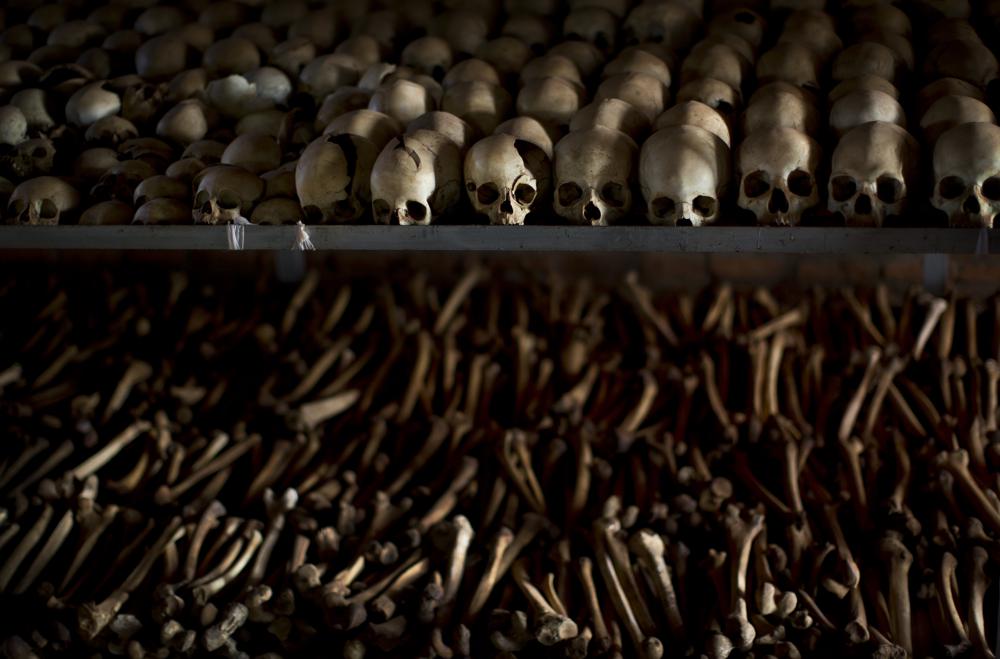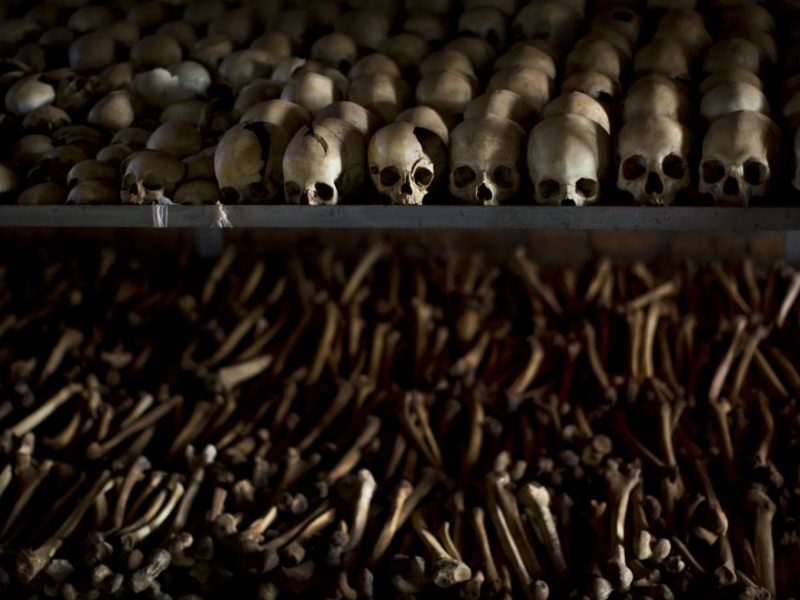
Dark Tourism Attracts Tourists to Rwanda
Dark tourism refers to visiting places where some of the darkest events of human history have unfolded. That can include genocide, assassination, incarceration, ethnic cleansing, war or disaster either natural or accidental. Some might associate the idea with ghost stories and scares, but those who study the practice say it’s unrelated to fear or supernatural elements. To many visitors who plan safaris in Rwanda, genocide memorial sites are among the attractions that do not miss in tour itineraries;
RWANDA GENOCIDE BEGINS
On April 6, 1994, a plane carrying Habyarimana and Burundi’s president Cyprien Ntaryamira was shot down over the capital city of Kigali, leaving no survivors. (It has never been conclusively determined who the culprits were. Some have blamed Hutu extremists, while others blamed leaders of the RPF.)
Within an hour of the plane crash, the Presidential Guard, together with members of the Rwandan armed forces (FAR) and Hutu militia groups known as the Interahamwe (“Those Who Attack Together”) and Impuzamugambi (“Those Who Have the Same Goal”), set up roadblocks and barricades and began slaughtering Tutsis and moderate Hutus with impunity.
Among the first victims of the genocide were the moderate Hutu Prime Minister Agathe Uwilingiyimana and 10 Belgian peacekeepers, killed on April 7. This violence created a political vacuum, into which an interim government of extremist Hutu Power leaders from the military high command stepped on April 9. The killing of the Belgium peacekeepers, meanwhile, provoked the withdrawal of Belgium troops. And the U.N. directed that peacekeepers only defend themselves thereafter.
SLAUGHTER SPREADS ACROSS RWANDA
The mass killings in Kigali quickly spread from that city to the rest of Rwanda. In the first two weeks, local administrators in central and southern Rwanda, where most Tutsi lived, resisted the genocide. After April 18, national officials removed the resisters and killed several of them. Other opponents then fell silent or actively led the killing. Officials rewarded killers with food, drink, drugs and money. Government-sponsored radio stations started calling on ordinary Rwandan civilians to murder their neighbors. Within three months, some 800,000 people had been slaughteredMeanwhile, the RPF resumed fighting, and civil war raged alongside the genocide. By early July, RPF forces had gained control over most of country, including Kigali.
In response, more than 2 million people, nearly all Hutus, fled Rwanda, crowding into refugee camps in the Congo (then called Zaire) and other neighboring countries.
After its victory, the RPF established a coalition government similar to that agreed upon at Arusha, with Pasteur Bizimungu, a Hutu, as president and Paul Kagame, a Tutsi, as vice president and defense minister.
Habyarimana’s NRMD party, which had played a key role in organizing the genocide, was outlawed, and a new constitution adopted in 2003 eliminated reference to ethnicity. The new constitution was followed by Kagame’s election to a 10-year term as Rwanda’s president and the country’s first-ever legislative elections.
RWANDAN ETHNIC TENSIONS
By the early 1990s, Rwanda, a small country with an overwhelmingly agricultural economy, had one of the highest population densities in Africa. About 85 percent of its population was Hutu; the rest were Tutsi, along with a small number of Twa, a Pygmy group who were the original inhabitants of Rwanda.
Part of German East Africa from 1897 to 1918, Rwanda became a Belgium trusteeship under a League of Nations mandate after World War I, along with neighboring Burundi.
Rwanda’s colonial period, during which the ruling Belgians favored the minority Tutsis over the Hutus, exacerbated the tendency of the few to oppress the many, creating a legacy of tension that exploded into violence even before Rwanda gained its independence.
A Hutu revolution in 1959 forced as many as 330,000 Tutsis to flee the country, making them an even smaller minority. By early 1961, victorious Hutus had forced Rwanda’s Tutsi monarch into exile and declared the country a republic. After a United Nations referendum that same year, Belgium officially granted independence to Rwanda in July 1962.
Ethnically motivated violence continued in the years following independence. In 1973, a military group installed Major General Juvenal Habyarimana, a moderate Hutu, in power.
The sole leader of Rwandan government for the next two decades, Habyarimana founded a new political party, the National Revolutionary Movement for Development (NRMD). He was elected president under a new constitution ratified in 1978 and reelected in 1983 and 1988, when he was the sole candidate.
In 1990, forces of the Rwandese Patriotic Front (RPF), consisting mostly of Tutsi refugees, invaded Rwanda from Uganda. Habyarimana accused Tutsi residents of being RPF accomplices and arrested hundreds of them. Between 1990 and 1993, government officials directed massacres of the Tutsi, killing hundreds. A ceasefire in these hostilities led to negotiations between the government and the RPF in 1992.
GENOCIDE MEMORIAL SITES
Some of the major memorials centers are highlighted below; you can request to visit any of them depending on their location and your itinerary.
Kigali Genocide Memorial Center
The Kigali genocide memorial center is located 10 minutes’ drive from the city center in Gisozi. It is the final resting place of 250,000 Rwandans killed in the genocide. It is run by AEGIS, a UK Non-Governmental Organisation committed to stop genocides from happening around the world. The center has different exhibit places with space of skulls of survivors and their personal belongings, photographs of survivors, reconciliation efforts, and genocide perpetrators. Another space has photographs and descriptions of genocides that have happened around the world showing that this indeed is not a Rwandan problem but a world problem that should never happen again. Outside the building, there is a garden and different mass graves where survivors and those who lost loved ones can come to‘re-connect’. This can be included on your itinerary while on the Kigali city tour because of its location near the city center.
Murambi Genocide Memorial
Murambi genocide memorial set on the grounds of former Murambi technical school near Murambi town is by far the most difficult memorial to visit because of the bodies and skeletons of genocide victims on display. One can almost recognize and identify a survivor if indeed they were a relative or friend. Tutsi were advised to hide in the technical school with pretext that French soldiers would protect them but alas, it was a trap. After gathering there, they had no food and were attacked by the militia. The site has several mass graves with former classrooms acting as exhibition rooms.
Nyamata Genocide Memorial
Nyamata genocide memorial center is a former church located 30 km south of Kigali in Bugesera. The center commemorates the 25,000 Rwanda genocide victims buried here. This is one of the more dark sites in Rwanda after Murambi genocide memorial.
It is unfortunate that many Tutsi people gathered here considering it a safe sanctuary because previously churches were seen as safe places. Little did they know that this building was a pure death trap as opposed to life? The Tutsi’s had locked themselves up in the church seeking safety but were shocked when Hutu militias forced open the doors open with hand grenades and reigned on them with machetes. You will find clothes and national ID cards of the dead victims on the church pews with blood spread all over the place. The alter cloth is still stained with blood from the massacre of the several victims. Outside the church are mass graves for your visits.
Nyanza Genocide Memorial
Nyanza genocide memorial located on the grounds of Kigali’s Ecole Technique Officielle in Kicukiro district – Kigali city . This often acts as the grounds for the genocide anniversary commemorations which happen yearly in April. It holds the graves of more than 10,000 genocide victims abandoned by the Belgian UN peacekeeping forces as the genocide intensified. The UN forces left these Tutsi’s in the hands of their massacres by not airlifting them to the safety they themselves were going, a sad story of bureaucracy.
Bisesero genocide memorial
Its located 60 km from Kibuye, Rwanda with 40,000 people said to have died here. This genocide memorial site is a story of resistance of the Tutsi’s against their attackers the Hutu’s in the hills of Bisesero where they used stones and sticks to counter the Hutu attack.
Ntarama genocide memorial
It is an hour’s drive from Kigali. It is a former catholic church where 5000 people were massacred. It is much smaller than the other church genocide memorial sites because it was a small village parish. Just like the others, the Tutsi’s came here for refuge assuming that it would be safe but were shocked by attacks from the Hutu militias, who in some place accessed the building by removing bricks one by one.
Nyarubuye genocide memorial
Site located 140 km from Kigali is Catholic Church where 2000 Rwandan were killed. It is said that Sylvestre Gacumbitsi the then mayor of the district was involved in distributing arms and encouraging Hutu’s to use rape and later maim and kill the Tutsi’s. Unlike Ntarama and Nyamata genocide memorial sites, Nyarubuye was restored into a church and is currently used by people in the area with the memorial center adjacent to the church.
Conclusion
Although the Rwanda genocide tour is considered as dark tourism, it has brought peace and joy in the hearts of natives and the tourists that visit the different sites because even after killings of different groups of people the genocide came to an end there has been harmonious living among different groups of people. Regardless of the tribe differences, acts of racism are now prohibited and today Rwandans refer themselves as one people.


